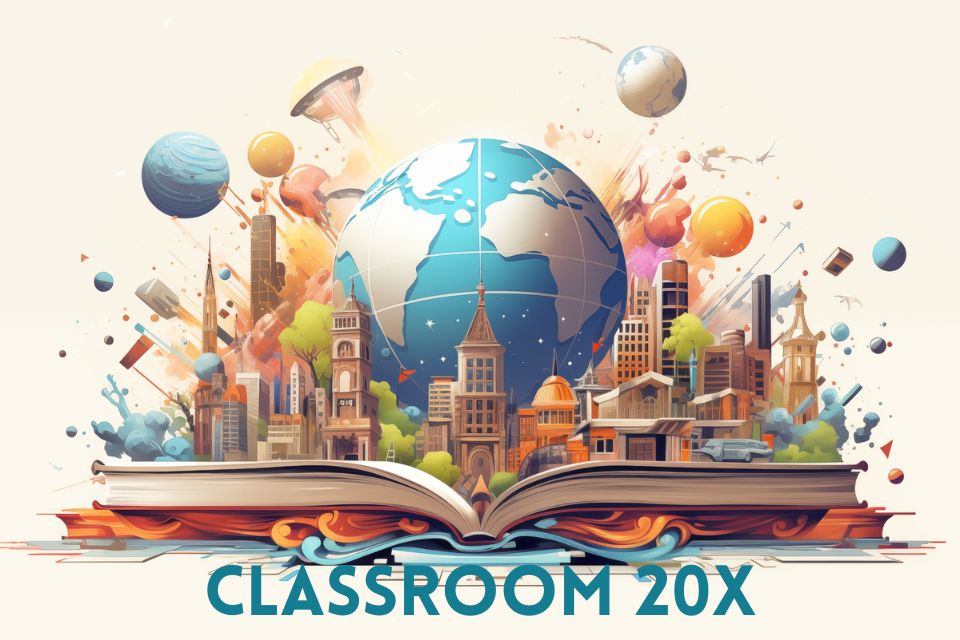Visualize entering a classroom in which students take a significant part in the learning process. Rather than the teacher talking away, every learner works at their own pace, finds out things that are of interest to them, and utilizes intelligent tools to direct their journey. It is what Classroom 20X is all about. It is not only about the addition of gadgets but also about reconsidering the way of collaboration between students and teachers.
Curious about how this change can transform the school into something more inspirational? Read on to learn the main concepts, advantages, and actions to implement Classroom 20X in real-life classes.
What Exactly Is Classroom 20X?
Classroom 20X is a learning model that is undergoing development and is student-centered. The 20X indicates 10 or greater increases in interaction, personalization, and performance, which is not a definite measure. It superimposes technology, adaptable design, and learner-centered pedagogy. The class is an interactive environment where the students challenge, ask questions, and think, as opposed to a strict lecture.
This model is based at its bottom on adaptive tools (adjust according to the progress of the students), real-time analysis, assignment choice, and collaborative environments.
Why Is Student-Centered Learning So Important?
Student-centered learning places emphasis on the learner rather than the teacher. The students in this approach assume more and more responsibility for what, how, and when they learn.
Here’s what it brings:
Ownership and Motivation: Students get more invested when they make choices.
Greater Thinking: They delve deeper into the issues that they are interested in.
More Skill Development: Aspects such as self-monitoring and critical thinking become better.
Closer Teacher Role: Teachers are more of guides or coaches rather than lecturers.
What Are The Core Features Of Classroom 20X?
- Adaptive and Customized Technology: AI and adaptive systems track the achievements of a student and recommend further actions. Anybody can proceed or have a break when necessary.
- Real-Time Feedback & Analytics: teachers have access to dashboards that indicate students requiring assistance. It is to say that problems are spotted at an early stage.
- Choice and Voice: Students decide how they are going to demonstrate what they have learned (video, poster, essay) or what subject to investigate next. They are involved in their learning process.
- Adaptable Spaces: Furniture moves, breakout areas, writable walls- these assist the classroom in adapting to small, big, or even group work.
- Blend of Modalities: The lessons will be integrated with the on-screen tools, practical activities, group discussions, and offline projects. It is not just digital; there is moderation.
What Benefits & Challenges Come With Classroom 20X?
Benefits:
- Increased participation due to the relevance of lessons.
- Enhanced performance as a result of personalization.
- Educators are at liberty to mentor and lessen paperwork.
- Mastery of 21st-century skills such as adaptability and self-control.
Challenges:
- Initial expenditure on hardware, software, and training.
- Inequality where not every student has a device or the internet.
- Analytics systems have privacy and data security issues.
- Resistance by teachers in case of training is poor or unsupported.
Planning in schools can help them avoid risks by selecting simple tools initially, safeguard the privacy of students, and make them accessible to everyone.
How Can Schools Begin The Shift Toward Classroom 20X?
- Start small: Pilot one class or grade with adaptive tools or flexible seating.
- Teachers, trainers, and tutors: This is the key to professional development.
- Audit current tools: Maybe your LMS, quizzes, or apps already offer features you can use.
- Involve students: Ask them what they want, where they struggle, and what tools they like.
- Measure meaningfully: Not just test scores, but engagement, participation, and student reflections.
What’s Next For Classroom 20X?
The vision doesn’t stay still. As AI improves, VR and AR will become more affordable and powerful. The classroom might extend into virtual spaces. We may see global classrooms where students across countries collaborate on projects.
The best part? Schools don’t need perfect tech to begin. The shift is mindset first. Begin with empathy, purpose, and choice, and layer in tools gradually.
In Summary
Classroom 20X isn’t a magic gadget; it’s a vision. It puts students at the center, honors their pace, and connects technology to meaningful learning. Challenges exist, but thoughtful planning and equity first can carry a school forward. What if your classroom grew into a space where curiosity and purpose ruled? That’s the promise of Classroom 20X.
